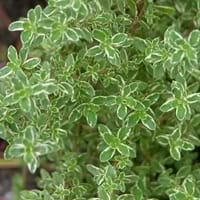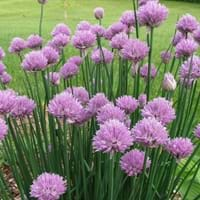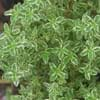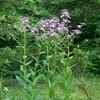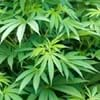Life Span
Perennial
Perennial
Origin
Asia, Europe
World/Pandemic, North America, Europe, Asia
Types
Elfin Thyme, Pink Chintz Thyme, Lime Thyme, White Moss Thyme, Lavender Thyme, Silver Needle Thyme
Common chives, Garlic chives, Siberian garlic chives, Giant Siberian chives
Habitat
Rocky areas
Rocky areas
USDA Hardiness Zone
6-9
4-9
Sunset Zone
1a, 1b, 2a, 2b, 3a, 3b, 4, 5, 6, 7, 8, 9, 10, 11, 12, 13, 14, 15, 16, 17, 18, 19, 20, 21, 22, 23, 24
A1, A2, A3, H1, H2, 1a, 1b, 2a, 2b, 3a, 3b, 4, 5, 6, 7, 8, 9, 10, 11, 12, 13, 14, 15, 16, 17, 18, 19, 20, 21, 22, 23, 24
Habit
Cushion/Mound-forming
Clump-Forming
Minimum Width
Not Available
Flower Color
Crimson, Lavender, Pink, White
White, Pink, Lavender
Flower Color Modifier
Unknown
Not Available
Fruit Color
Not Available
Black
Leaf Color in Spring
Green
Green, Light Green
Leaf Color in Summer
Gray Green
Green
Leaf Color in Fall
Gray Green
Green, Yellow green
Leaf Color in Winter
Gray Green
Not Available
Leaf Shape
Tiny
Grass like
Plant Season
Summer
Spring, Summer, Fall
Sunlight
Full Sun, Part sun
Full Sun, Partial Sun
Growth Rate
Medium
Medium
Type of Soil
Loamy, Sandy
Loam, Sand
The pH of Soil
Neutral, Slightly Alkaline
Neutral
Soil Drainage
Well drained
Well drained
Bloom Time
Fall, Spring, Summer, Winter
Late Spring, Early Summer
Tolerances
Drought
Not Available
Where to Plant?
Container, Ground
Ground, Pot
How to Plant?
Seedlings, Stem Planting
Seedlings, Transplanting
Plant Maintenance
Medium
Medium
Watering Requirements
Do not water frequently, Does not require lot of watering, Requires watering in the growing season, Water occasionally
Requires regular watering, Water every two or three days during warmer months, Water when soil is dry
In Summer
Lots of watering
Lots of watering
In Spring
Moderate
Moderate
In Winter
Average Water
Average Water
Soil pH
Neutral, Slightly Alkaline
Neutral
Soil Type
Loamy, Sandy
Loam, Sand
Soil Drainage Capacity
Well drained
Well drained
Sun Exposure
Full Sun, Part sun
Full Sun, Partial Sun
Pruning
Prune for shortening long shoots, Prune if you want to improve plant shape, Prune lower leaves, Requires extensive pruning
Prune in spring, Prune in summer, Prune to stimulate growth, Remove deadheads
Fertilizers
All-Purpose Liquid Fertilizer
All-Purpose Liquid Fertilizer
Pests and Diseases
Alternaria leaf blight, Aphids, Botrytis collar rot, Rhizoctonia Root Rot, Spider mites
Bacterial leaf spot, Damping-off, Downy mildew, head rot, Pink Root, Rust, Thripes
Plant Tolerance
Drought
Drought
Flower Petal Number
Not Available
Single
Fragrant Bark/Stem
Yes
Yes
Foliage Texture
Fine
Fine
Foliage Sheen
Matte
Matte
Attracts
Butterflies
Not Available
Allergy
Diarrhea, Skin irritation
Asthma, Diarrhea, Itchiness, Pain and fatigue, Skin rash
Aesthetic Uses
Beautification, Showy Purposes, Used for decorating walls, fences, gates, hedges, etc.
Not Used For Aesthetic Purpose
Beauty Benefits
Not Available
Not Available
Environmental Uses
Air purification
Air purification
Medicinal Uses
Arthritis, Bronchitis, Chronic fatigue, Cough, Gastritis, Hair Loss, Insomnia, Kidney problems, Muscle Pain, Skin irritation, Snoring, Sore throat, Stomach pain, Swelling
Antioxidants, Bone strength, Improve heart health, Nutrients
Part of Plant Used
Whole plant
Leaves, Seeds
Other Uses
Air freshner, Cosmetics, Economic Purpose, Employed in herbal medicine, Oil is used in perfume, soaps, creams, etc., Showy Purposes, Used As Food, Used as Ornamental plant, Used for fragrance
Employed in herbal medicine, Used As Food
Used As Indoor Plant
Yes
Yes
Used As Outdoor Plant
Yes
Yes
Garden Design
Container, Edible, Herb, Rock Garden
Alpine, Cutflower, Edible, Herb / Vegetable, Mixed Border, Rock Garden / Wall
Botanical Name
Thymus vulgaris
ALLIUM schoenoprasum
Common Name
Thyme
Chives, Cultivated Chives, Garden Chives
In Hindi
अजवायन के फूल
Chives
In German
Thymian
Schnittlauch
In French
Thym
Ciboulette
In Spanish
Tomillo
Cebollino
In Greek
θυμάρι
βολβοί φαγώσιμοι
In Portuguese
Tomilho
Cebolinha
In Polish
Tymianek
Szczypiorek
In Latin
Thymum
Sectivi porri
Phylum
Magnoliophyta
Spermatophyta
Class
Magnoliopsida
Liliopsida
Order
Not Available
Asparagales
Family
Labiatae
Liliaceae
Clade
Not Available
Angiosperms, Monocots
Tribe
Not Available
Not Available
Subfamily
Not Available
Allioideae
Number of Species
Not Available
Importance of Thyme and Chives
Want to have the most appropriate plant for your garden? You might want to know the importance of Thyme and Chives. Basically, these two plants vary in many aspects. Compare Thyme and Chives as they differ in many characteristics such as their life, care, benefits, facts, etc. Every gardener must at least have the slightest clue about the plants he wants to plant in his garden. Compare their benefits, which differ in many ways like facts and uses. The medicinal use of Thyme is Arthritis, Bronchitis, Chronic fatigue, Cough, Gastritis, Hair Loss, Insomnia, Kidney problems, Muscle Pain, Skin irritation, Snoring, Sore throat, Stomach pain and Swelling whereas of Chives is Antioxidants, Bone strength, Improve heart health and Nutrients. Thyme has beauty benefits as follows: Not Available while Chives has beauty benefits as follows: Not Available.
Compare Facts of Thyme vs Chives
How to choose the best garden plant for your garden depending upon its facts? Here garden plant comparison will help you to solve this query. Compare the facts of Thyme vs Chives and know which one to choose. As garden plants have benefits and other uses, allergy is also a major drawback of plants for some people. Allergic reactions of Thyme are Diarrhea and Skin irritation whereas of Chives have Asthma, Diarrhea, Itchiness, Pain and fatigue and Skin rash respectively. Having a fruit bearing plant in your garden can be a plus point of your garden. Thyme has no showy fruits and Chives has no showy fruits. Also Thyme is flowering and Chives is flowering. You can compare Thyme and Chives facts and facts of other plants too.
